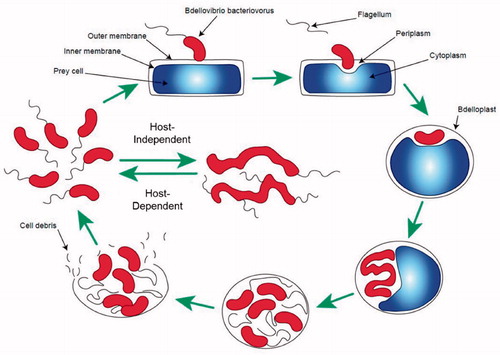Figures & data
Table 1. Overview of bacteria known to display predatory lifestyles.
Table 2. Overview of in vivo studies that used B. bacteriovorus as a biocontrol agent against pathogens.


